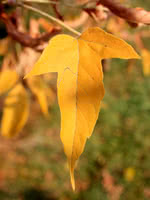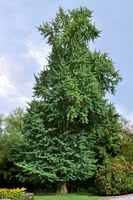Mon-Fri 9am - 5pm Mountain time
Manitoba Maple vs Ginkgo Biloba
Acer negundo
Ginkgo biloba
NOT AVAILABLE THIS SEASON - MIGHT RETURN
Manitoba Maple is a fast growing tree with great fall color. These trees are typically grown as feature or shade trees on larger properties and acreages. Manitoba maples are cold hardy and tolerant of a wide range of soil moisture conditions.
Note that Manitoba Maple is considered toxic to horses.
The Ginkgo Biloba is regarded as one of the most distinctive and beautiful of all the deciduous trees, and has remained genetically unchanged for millions of years. Its beautifully fan-shaped leaves develop a clear yellow colour in fall. Graceful and attractive year-round, Ginkgo is the perfect conversation starter in your yard.
Manitoba Maple Quick Facts
Ginkgo Biloba Quick Facts
Toxicity: Uncooked nuts in large quantities
In row spacing: 2.4 - 3 m (8 - 10 ft)

